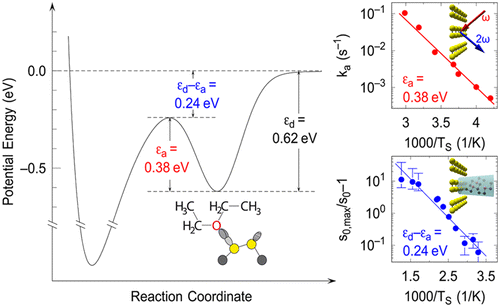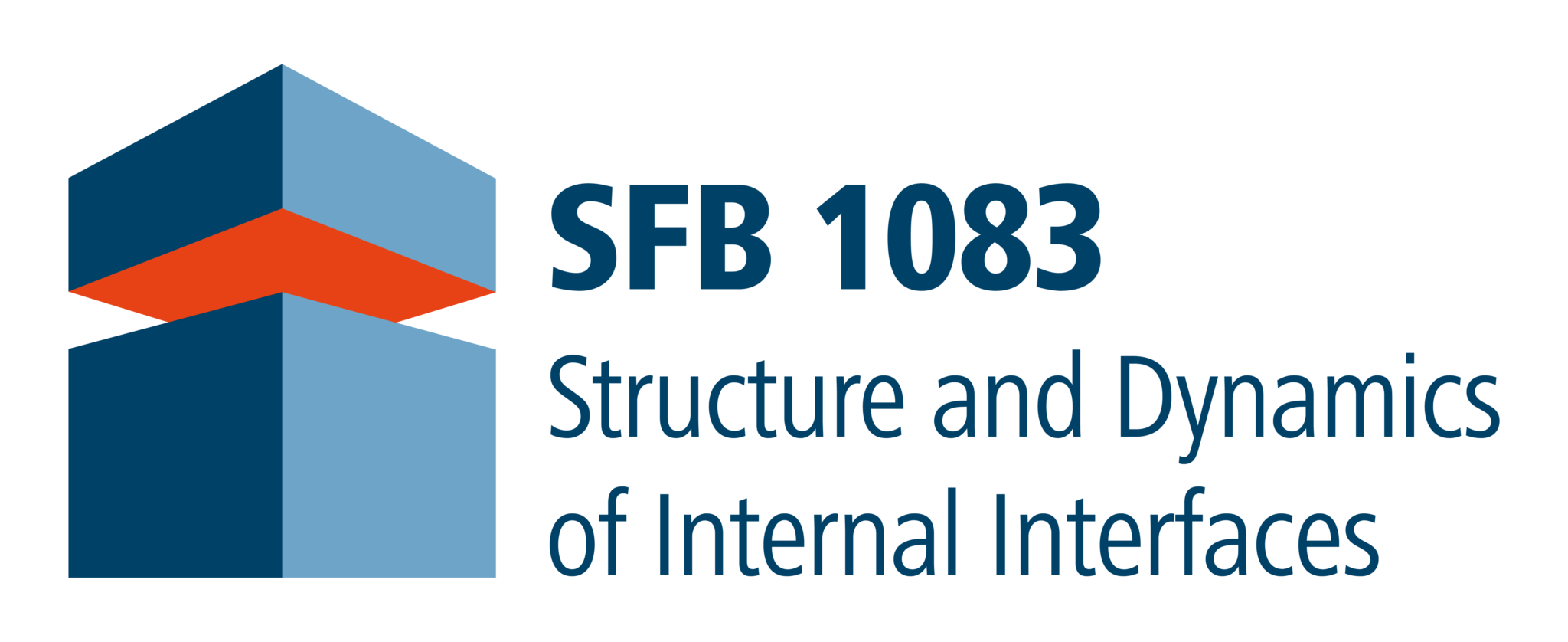Binding energy and dissociation barrier: experimental determination of the key parameters of the potential energy curve of diethyl ether on Si(001)
M. Reutzel, M. Lipponer, M. Dürr, U. Höfer
Journal of Physical Chemistry Letters 6 (2015) 3971
Following surface reactions in real time – optical second harmonic generation provides direct access to the kinetics of surface reactions of organic molecules on silicon.

Optical second harmonic signal from Si(001) covered with a few percent of a monolayer of diethyl ether. When heating the sample (red part of the signal trace), the slow drop of the signal indicates ether cleavage on Si(001) and the kinetics of the reaction can be followed in real time.
The adsorption of gas phase molecules on solid surfaces can be often decomposed into an initial adsorption step of the intact molecules and further reaction of these molecules on the surface. The latter reaction step can be very complex; in the case of organic molecules on silicon surfaces, it typically determines the final products. A precise understanding of the respective reaction kinetics is thus important for the control of such surface reactions. However, it is often difficult to monitor the kinetics of these surface reactions,as on the one hand, the probe has to be sensitive to the chemical change on the surface, and on the other hand, it has to be fast enough in order to follow the respective chemical change in real-time.

Measurement of the reaction kinetics by means of optical second harmonic generation allows for the determination of the reaction barrier εa for ether cleavage on Si(001). In combination with molecular beam techniques, the binding energy εd of the involved datively bound intermediate can also be determined.
Physicists from Marburg and Gießen have thus developed a new approach for monitoring these surface reactions. They applied optical second harmonic generation (SHG) which can be very sensitive to chemical changes on the surface and therefore allow observation of the reaction kinetics in real-time over a wide range of time scales. With these measurements, ether cleavage of diethyl ether on Si(001) was studied in detail. For the first time, both the binding energy of an intermediate state and the respective conversion barrier into the final state were determined in a consistent measurement. As these are the two main parameters of the potential energy curve of such systems, they are also the basis for the controlled functionalization of semiconductor surfaces with organic molecules. Precise knowledge of these parameters can thus help to improve the quality of inorganic/organic interfaces and organic multilayers grown on these interfaces.






